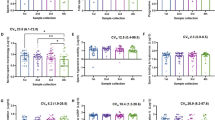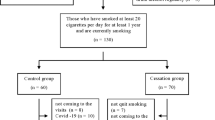Abstract
Background: The increased use of mobile phones, the media’s attention for general health, and the increase of idiopathic male infertility suggest to investigate the possible consequences of an excessive use of mobile phones on semen quality. Aim: To evaluate the conventional and some of the main biofunctional sperm parameters in healthy men according to the different use of the mobile phone. Subjects and methods: All the enrolled subjects in this study were divided into four groups according to their active cell phone use: group A= no use (no.=10 subjects); group B= <2 h/day (no.=16); group C= 2–4 h/day (no.=17); and group D= >4 h/day (no.=20). Among the subjects of the group D (>4 h/day), a further evaluation was made between the “trousers users”(no.=12) and “shirt users”(no.=8), and they underwent semen collection to evaluate conventional and biofunctional sperm parameters (density, total count, morphology, progressive motility, apoptosis, mithocondrial membrane potential, chromatin compaction, DNA fragmentation). Results: None of the conventional sperm parameters examined were significantly altered. However, the group D and the trousers users showed a higher percentage of sperm DNA fragmentation compared to other groups. Conclusion: These results suggest that the sperm DNA fragmentation could represent the only parameter significantly altered in the subjects who use the mobile phone for more than 4 h/day and in particular for those who use the device in the pocket of the trousers.
Similar content being viewed by others
References
Depinder F, Makkler K, Agarwal A. Cell phones and male infertility: dissecting the relationship. Reprod Biomed Online 2007, 3: 266–70.
Conclusions on mobile phones and radio frequency fields. European Commission Scientific Committee on Emerging and Newly Identified Health Risks (SCENIHR). http://ec.europa.eu/health/opinions2/en/electromagnetic-fields/l-3/5-conclusions-mobile-phones.htm
Worldwide mobile phone sales fell in 2012: Gartner. February 13, 2013. http://www.reuters.com/article/2013/02/13/us-mobilephones-gartner-idUSBRE91C0G120130213
McLachlan RI. Approach to the patient with oligozoospermia. J Clin Endocrinol Metab 2013, 98: 873–80.
Kesari KK, Behari J. Evidence for mobile phone radiation exposure effects on reproductive pattern of male rats: role of ROS. Electromagn Biol Med 2012, 31: 213–22.
Kesari KK, Kumar S, Behari J. Mobile phone usage and male infertility in Wistar rats. Indian J Exp Biol 2010, 48: 987–92.
Kesari KK, Kumar S, Behari J. Effects of radiofrequency electromagnetic wave exposure from cellular phones on the reproductive pattern in male Wistar rats. Appl Biochem Biotechnol 2011; 164: 546–59.
Imai N, Kawabe M, Hikage T, Nojima T, Takahashi S, Shirai T. Effects on rat testis of 1.95-GHz W-CDMA for IMT-2000 cellular phones. Syst Biol Reprod Med 2011, 57: 204–9.
Salama N, Kishimoto T, Kanayama HO, Kagawa S. The mobile phone decreases fructose but not citrate in rabbit semen: a longitudinal study. Syst Biol Reprod Med 2009, 55: 181–7.
Mailankot M, Kunnath AP, Jayalekshmi H, Koduru B, Valsalan R. Radio frequency electromagnetic radiation (RF-EMR) from GSM (0.9/1.8GHz) mobile phones induces oxidative stress and reduces sperm motility in rats. Clinics (Sao Paulo) 2009, 64: 561–5.
Salama N, Kishimoto T, Kanayama HO. Effects of exposure to a mobile phone on testicular function and structure in adult rabbit. Int JAndrol 2010, 33: 88–94.
Aitken RJ, Bennetts LE, Sawyer D, Wiklendt AM, King BV. Impact of radio frequency electromagnetic radiation on DNA integrity in the male germline. Int J Androl 2005, 28: 171–9.
Gutschi T, Mohamad Al-Ali B, Shamloul R, Pummer K, Trummer H. Impact of cell phone use on men’s semen parameters. Andrologia 2011, 43: 312–6.
Falzone N, Huyser C, Franken DR, Leszczynski D. Mobile phone radiation does not induce pro-apoptosis effects in human spermatozoa. Radiat Res 2010, 174: 169–76.
Agarwal A, Desai NR, Makker K, et al. Effects of radiofrequency electromagnetic waves (RF-EMW) from cellular phones on human ejaculated semen: an in vitro pilot study. Fertil Steril 2009, 92: 1318–25.
Agarwal A, Deepinder F, Sharma RK, Ranga G, Li J. Effect of cell phone usage on semen analysis in men attending infertility clinic: an observational study. Fertil Steril 2008, 89: 124–8.
De Iuliis GN, Newey RJ, King BV, Aitken RJ. Mobile phone radiation induces reactive oxygen species production and DNA damage in human spermatozoa in vitro. PLoS One 2009, 4: e6446.
Erogul O, Oztas E, Yildirim I, et al. Effects of electromagnetic radiation from a cellular phone on human sperm motility: an in vitro study. Arch Med Res 2006, 37: 840–3.
Fejes I, Závaczki Z, Szöllosi J, et al. Is there a relationship between cell phone use and semen quality? Arch Androl 2005, 51: 385–93.
La Vignera S, Condorelli RA, Vicari E, D’Agata R, Calogero AE. Effects of the exposure to mobile phones on male reproduction: a review of the literature. J Androl 2012, 33: 350–6.
Mahmoud A, Comhaire F. Systemic causes of male infertility. In: Andrology for the Clinician. Springer, 2006, 57–63.
Jarow JP. Endocrine causes of male infertility. Urol Clin North Am 2003, 30: 83–90.
La Vignera S, Vicari E, Condorelli RA, D’Agata R, Calogero AE. Male accessory gland infection and sperm parameters (review). Int JAndrol 2011, 34: 330–47.
La Vignera S, Calogero AE, Condorelli R, et al. Criptorchidism and its long term complications. Eur Rev Med Pharmacol Sci 2009, 13: 351–6.
La Vignera S, Condorelli R, Vicari E, D’Agata R, Calogero AE. Effects of varicocelectomy on sperm DNA fragmentation, mitochondrial function, chromatin condensation, and apoptosis. J Androl 2012, 33: 389–96.
Sakamoto H, Ogawa Y, Yoshida Y. Relationship between testicular volume and testicular function: comparison of the Prader orchidometric and ultrasonographic measurements in patients with infertility. Asian J Androl 2008, 10: 319–24.
Calogero AE, Polosa R, Perdichizzi A, et al. Cigarette smoke extract immobilizes human spermatozoa and induces sperm apoptosis. Reprod Biomed Online 2009, 19: 564–71.
La Vignera S, Condorelli RA, Balercia G, Vicari E, Calogero AE. Does alcohol have any effect on male reproductive function ? A review of literature. Asian J Androl 2013, 15: 221–5.
Dandona P, Rosenberg MT. A pratical guide to male hypogonadism in the primary care setting. Int J Clin Pract 2010, 64: 682–96.
Cooper DS. Subclinical hypothyroidism. N Engl J Med 2001, 345: 260–5.
La Vignera S, Condorelli RA, Vicari E, Calogero AE. Negative effect of increased body weight on sperm conventional and nonconventional flow cytometric sperm parameters. J Androl 2012, 33: 53–8.
Lotti F, Corona G, Colpi GM, et al. Elevated body mass index correlates with higher seminal plasma interleukin 8 levels and ultrasonographic abnormalities of the prostate in men attending an andrology clinic for infertility. J Endocrinol Invest 2011, 34: 336–42.
Calogero A, Polosa R, Perdichizzi A, et al. Cigarette smoke extract immobilizes human spermatozoa and induces sperm apoptosis. Reprod Biomed Online 2009, 19: 564–71.
WHO laboratory manual for the examination and processing of human semen, Fifth ed. Geneva: WHO, 2010.
Pilatz A, Rusz A, Wagenlehner L, Weidner W, Altinkilic B. Reference values for testicular volume, epididymal head size and peak systolic velocity of the testicular artery in adult males measured by ultrasonography. Ultraschall in der Medizin 2012, 34: 349–54.
Vicari E. Seminal leukocyte concentration and related specific reactive oxygen species production in patients with male accessory gland infections. Hum Reprod 1999, 14: 2025–30.
Behre HM, Kliesch S, Schädel F, Nieschlag E. Clinical relevance of scrotal and transrectal ultrasonography in andrological patients. Int J Androl 1995, 18: 27–31.
Lotti F, Corona G, Mancini M, et al. Ultrasonographic and clinical correlates of seminal plasma interleukin-8 levels in patients attending an andrology clinic for infertility. Int J Androl 2011, 34: 600–13.
Perdichizzi A, Nicoletti F, La Vignera S, et al. Effects of tumour necrosis factor-alpha on human sperm motility and apoptosis. J Clin Immunol 2007, 27: 152–62.
Manicardi GC, Bianchi PG, Pantano S, et al. Presence of endogenous nicks in DNA of ejaculated human spermatozoa and its relationship to chromomycin A3 accessibility. Biol Reprod 1995, 52: 864–7.
Sailer BL, Jost LK, Evenson DP. Mammalian sperm DNA susceptibility to in situ denaturation associated with the presence of DNA strand breaks as measured by the terminal deoxynucleotidyl transferase assay. J Androl 1995, 16: 80–7.
Sakkas D, Moffatt O, Manicardi GC, Mariethoz E, Tarozzi N, Bizzaro D. Nature of DNA damage in ejaculated human spermatozoa and the possible involvement of apoptosis. Biol Reprod 2002, 66: 1061–7.
Moustafa MH, Sharma RK, Thornton J, et al. Relationship between ROS production, apoptosis and DNA denaturation in spermatozoa from patients examined for infertility. Hum Reprod 2004, 19: 129–38.
Ahmad G, Moinard N, Esquerré-Lamare C, Mieusset R, Bujan L. Mild induced testicular and epididymal hyperthermia alters sperm chromatin integrity in men. Fertil Steril 2012, 97: 546–53.
Author information
Authors and Affiliations
Corresponding author
Rights and permissions
About this article
Cite this article
Rago, R., Salacone, P., Caponecchia, L. et al. The semen quality of the mobile phone users. J Endocrinol Invest 36, 970–974 (2013). https://doi.org/10.3275/8996
Accepted:
Published:
Issue Date:
DOI: https://doi.org/10.3275/8996




